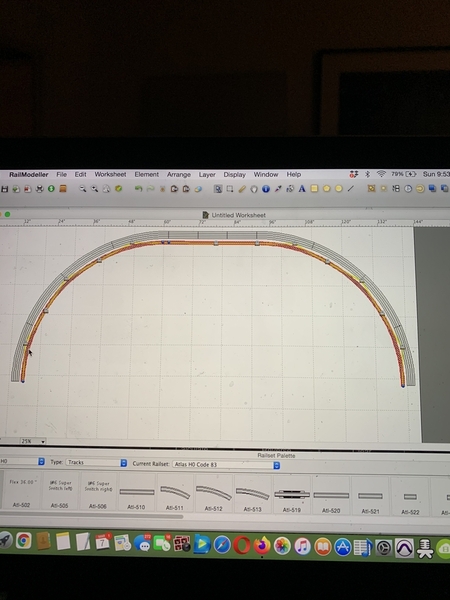Here is some operational advice.
If you put in automatic switches, then be careful when you use them. The little tiny motors will burn out very easily. They are not as robust as the O Gauge.
When I was twelve, I saved up for a long time to buy two automatic switches for my HO layout. After I installed them and hooked them up, I was having a little trouble with one of the switches, so I switched it back and forth real fast about 10 times. The switch burned out and the little half cylinder of plastic on the switch that houses the solenoid melted!
Also, the switch controllers are flat little panels, with a plastic thumb-tab in it. The tab slides back and forth.
I thought that you were suppose to push down on the plastic tab, and then slide it over to one side or the other to operate the switch while you were holding down. Wrong. You can burn out the switch.
You are suppose to just gently slide the tab over, and then lightly tap it so that it makes a momentary contact. When you tap it, the switch will operated. If you push down first, and slide it over while you are pushing down on it, the current to the motor stays in contact the whole time and overheats the switch motor.
Also, the long 36 or 48 inch pieces of flexible track are **** to use if you think that you are going to bend it into one long curve. It is not that easy to bend, and when you do bend it, then of course the inside rail gets "longer" (meaning that the rail ends jut out from the end of the plastic ties), and the outside rails get "shorter" (meaning that the ends of the rail pulls inward away from the ends of the plastic ties). As a result, you are trying to hold this thing in place, with screws or whatever, while it is under tension, and use a small hacksaw to cut off the ends of the rails so that they match up and are even. And of course, since you have bent each rail into a different curve radius, they don't want to stay even.
Is is so much easier to just buy single curved sections and hook them together.
The long flexible pieces are fine for straight runs, or to make a small amount of curve in a long run just to make a corrective adjustment.
And, be careful if you buy those small, cute, yard goats. Some of them are so low to the ground that when they go through a motorized switch, the sides of the engine catch on the high plastic areas of the switch motor covers, and they derail every time. (You are then suppose to go out and buy an "extension" fitting, that extends the switch motor further away from the switch, so that the engine won't catch on it.
Also, with HO, unlike O Gauge, sometimes even the smallest amount of irregularity in the track ends, when you hook up the track sections, will cause constant derailment. It is very unforgiving. Often, you won't be able to even see the irregularity with your eyes, but you can watch the car derail as it slowly goes over the track joint. It is not like O Gauge, where the big metal wheels will easily travel over gaps and small rises, falls or bends in track ends.
And, be careful if you run locos for a long time. I had an FA-2 Diesel.. I really liked it. But one time, I kept it running on my track at high speed for about 10 minutes, and the top of the shell, above the interior motor, totally melted!
These are just some of my unpleasant memories of my 5 year foray in HO gauge.
In short, HO is more fragile and unforgiving than O Gauge. You will spend a lot more time tinkering with track issues and derailments than O Gauge. And, you need to have a real good pair of close-up glasses.
Hope this helps.
Mannyrock






